/ The Musical Interpretation of Movies by Binary. / The Great Depression /
Project "The Interpretation of Painting by Binary"

What Madame Cézanne was thinking.
Artist: Kenji Kojima, 2022
Three Minutes Digest https://youtu.be/xZbJ4XBi1uA
Seven Portraits of Madame Cézanne. Painting by Paul Cézanne.
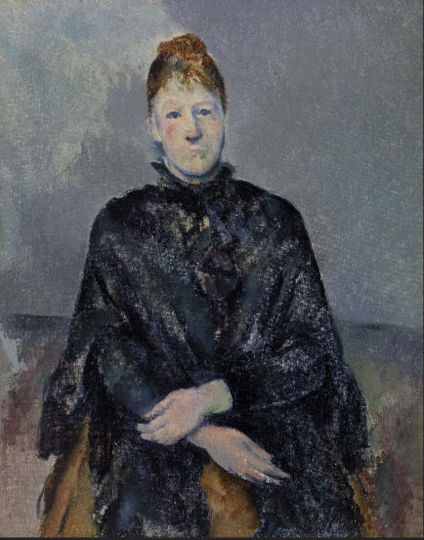 0:29
0:29
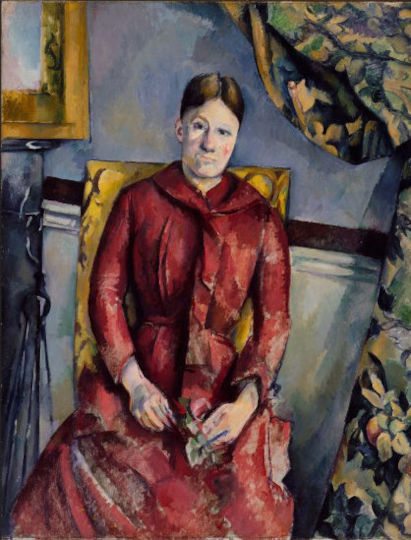 01:41
01:41
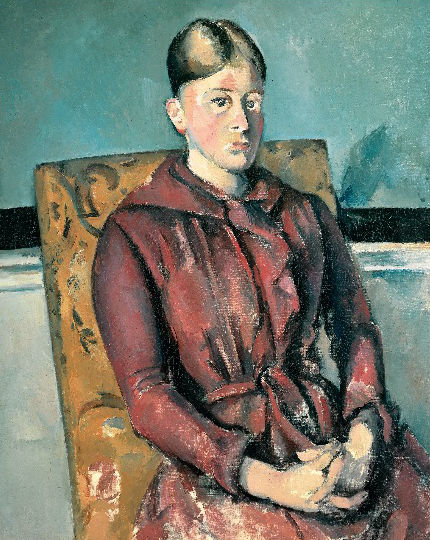 03:19
03:19
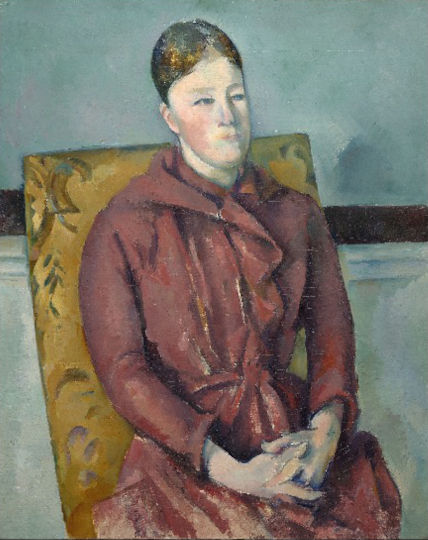 06:17
06:17
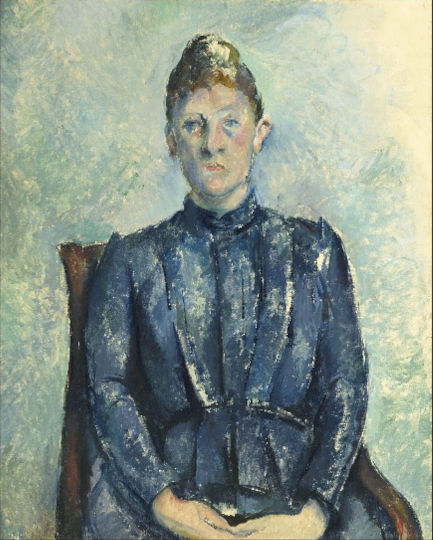 08:00
08:00
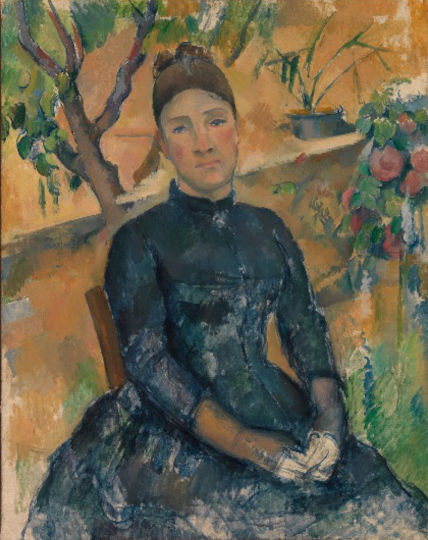 10:23
10:23
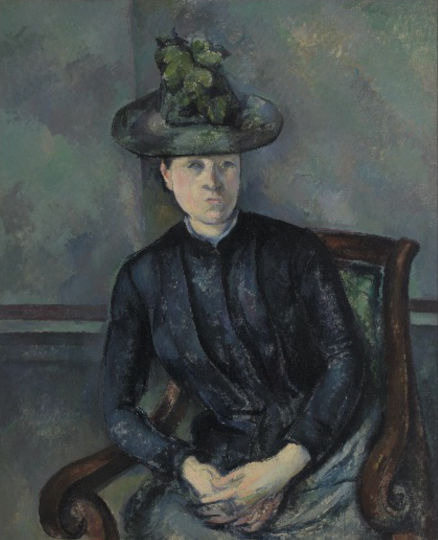 11:49
11:49
|
Show: Japanese & French / 日本語、フランス語
Hide: Japanese & French / 日本語、フランス語
ポールセザンヌは、セザンヌ夫人を椅子に座らせるポーズに何かインスパイアされるものを感じました。彼はキャンバス上に何度もそれを表現しています。このプロジェクトでは、セザンヌ夫人の 7 枚の肖像画の視覚データを、バイナリで解析して12 音階の音楽に変換してそれを解釈しました。現在人類史のすべてのメディアは、バイナリ (0,1) に還元されデジタル データとして記録されています。バイナリはコンピューターが実行する、最も低レベルのマシンコードです。バイナリーはアートマテリアルに用いると、メディア間のクロス感性を可能にします。この作品では視覚を聴覚に変換しています。 新型コロナウイルス感染拡大後、アーティストの小島健治は、作品のビデオ撮影のための外出を自粛していました。彼はパブリック ドメインの古典絵画のデジタル画像をネットで入手できることを思い出しました。急速に発展するデジタルの世界で、アナログ美術の歴史を振り返る良い機会です。バイナリは物質としては空です。おそらく私たちは物理的なアート素材を扱う最後の世代になるかもしれません。しかし私たちはまだ、実空間における手触りの創作を知っています。 アーティストの小島は、視覚と聴覚のそれぞれの情報が重なり合うと考えてきました。外の世界から受ける印象は、あなたの心の中で音楽になります。音楽をキャンバスに表現して絵画が生まれます。このプロジェクトは、絵画から音楽を掘り起こす発掘調査です。彼はコンピュータ アルゴリズムが人間の感性を再現できるかどうかについて、実験的なアート・アプリケーションを開発しました。カリフォルニア大学での最近の研究によると、私たちの脳はバラバラに変化する視覚情報をタイムライン上にまとめることで、環境に対する安定した認識を作り出すと言っています。小島がプログラムしたアルゴリズムは、タイムライン上の色のバラバなグリッド データを 2 進数でランダムに収集し、音符に変換して MIDI ピアノを演奏しました。 Participation aux XXVIe Rencontres Internationales Traverse, 15 mars - 2 avril 2023. What Madame Cézanne was thinking. – (Que pensait Madame Cézanne) Paul Cézanne a éprouvé certaines sensations en posant Madame Cézanne sur une chaise. Il l’a exprimé à de nombreuses reprises sur ses toiles. Ce projet a interprété les données visuelles des 7 portraits de Madame Cézanne comme une musique à 12 tons par analyse binaire. Tous les médias de l’histoire de l’humanité sont désormais réduits et enregistrés en données numériques sous forme binaire (0,1). Le binaire est le niveau le plus bas du code machine que l’ordinateur peut exécuter. L’art matériel binaire crée des sensibilités croisées possibles entre les médias. Après la COVID-19, l’artiste Kenji Kojima s’est abstenu de sortir pour tourner une vidéo pour son œuvre. Il s’est souvenu qu’il pouvait obtenir des images numériques de peintures classiques du domaine public sur le net. C’était une bonne occasion de réfléchir à l’histoire de l’art analogique dans un monde numérique en plein développement. Le binaire est physiquement vide. Nous sommes probablement la dernière génération à manipuler des matériaux artistiques physiques. Nous avons connu le sens tactile de la main dans l’espace réel. L’artiste Kenji Kojima a pensé que la vue et l’ouïe se chevauchent avec chaque information des sens. L’impression reçue du monde extérieur devient une musique dans votre esprit. Lorsque vous exprimez cette musique sur une toile, une peinture est née. Ce projet est une excavation qui extrait la musique des peintures. Il a développé l’application artistique expérimentale sur la question de savoir si les algorithmes informatiques peuvent reproduire la sensibilité humaine. Selon une étude récente de l’université de Californie, notre cerveau crée une perception stable de l’environnement en rassemblant des informations visuelles changeantes et disjointes sur une ligne de temps. L’algorithme qu’il a programmé a collecté des données de grilles disjointes de couleurs sur une ligne de temps de manière aléatoire par binaire et les a converties en notes de musique et joué du piano midi. Hide: Japanese & French / 日本語、フランス語 This project compiled seven short videos which interpret the visual data of Madame Cézanne's portraits as 12-tone music by binary analysis. The total duration is 14:15. Paul Cézanne got certain sensations from posing Madame Cézanne in a chair. He expressed that many times on his canvases. Artist Kenji Kojima has been thinking seeing and hearing overlap with each information of the senses. This project is the excavation that digs music from paintings. He developed the experimental art application on whether computer algorithms can reproduce human sensibility. After COVID-19, the artist Kenji Kojima was refraining from going out to shoot a video for his artwork. He recalled he could get digital images of public domain classic paintings on the net. It was a good chance to reflect on analog art history in the rapidly developed digital world. The binary is physically empty. Probably we are the last generation of handling physical art materials. We have known the tactile sense of the hand in actual space. All media in human history are now reduced and recorded in digital data as binary (0,1). The binary is the lowest level of machine code that the computer can execute. Art material binary creates media cross sensibilities possible. A recent study at the University of California that our brain creates a stable perception of the environment by putting together disjointed changing visual information on a timeline. The algorithm he programmed collected disjointed grid data of colors on a timeline randomly by binary and converted them to musical notes and played midi piano. Show: Kenji Kojima's Biography
Hide: Kenji Kojima's Biography
Kenji Kojima is a digital artist. He has been experimenting with the relationships between perception and cognition, technology, music, and visual art since the early 1990s. Primarily he has interested in the relationship between seeing and hearing. He was born in Japan and moved to New York in 1980. He painted egg tempera paintings that were medieval art materials and techniques for the first 10 years in New York City. His paintings were collected by Citibank, Hess Oil, and others. The personal computer improved rapidly during the 1980s. He felt more comfortable with computer art than paintings. He switched His artwork to digital in the early 1990s. His early digital works were archived in the New Museum - Rhizome, New York. He developed the computer software "RGB MusicLab" in 2007 and created an interdisciplinary work exploring the relationship between images and music. He programmed the software “Luce” for the “Techno Synesthesia” project in 2014. His digital art series was exhibited in New York, at media art festivals worldwide, including Europe, Brazil, and Asia, and the online exhibitions by ACM SIGGRAPH and FILE, etc. Anti-nuclear artwork “Composition FUKUSHIMA 2011” was collected in CTF Collective Trauma Film Collections / ArtvideoKoeln in 2015. He started the new series "The Musical Interpretation of Paintings and Photographs" which creates music from image data in 2021. LiveCode programmer. https://kenjikojima.com/ Hide: Kenji Kojima's Biography History of Media Festival Participation: March 15 - April 2, 2023: XXVIe Rencontres Internationales Traverse, Toulouse, France July 4 - August 28, 2023: FILE "Electronic Language International Festival", São Paulo, Brazil |